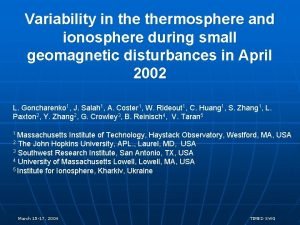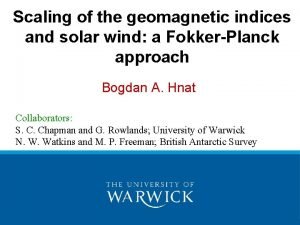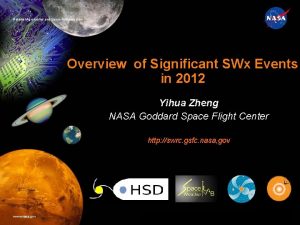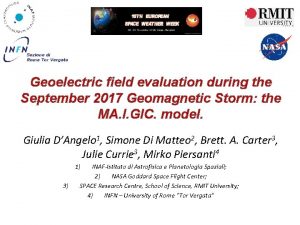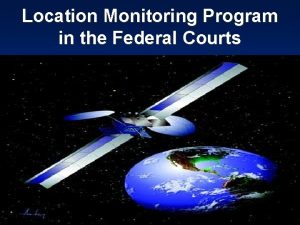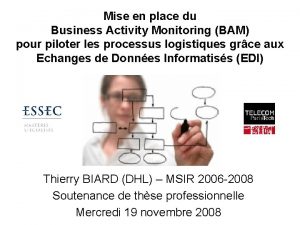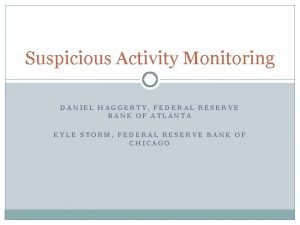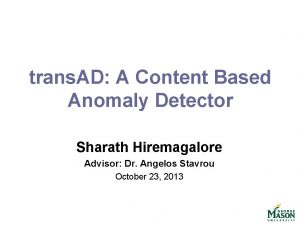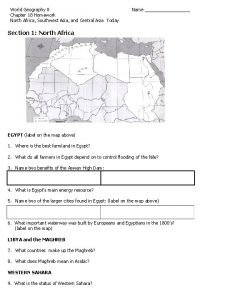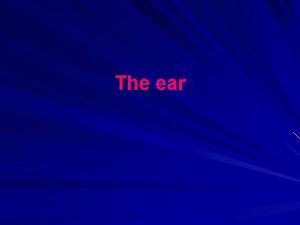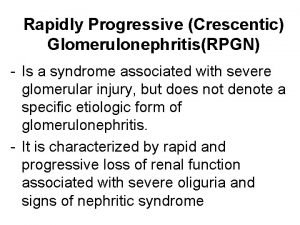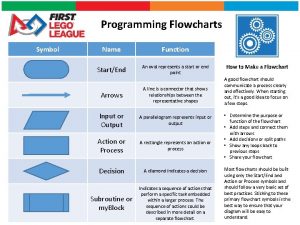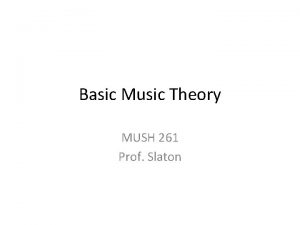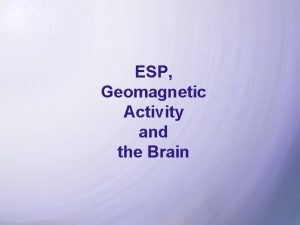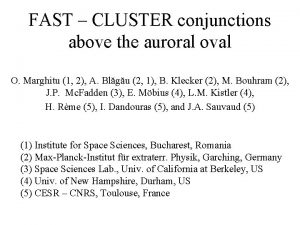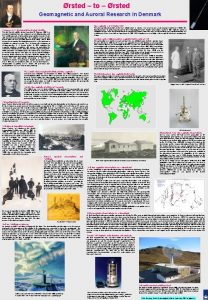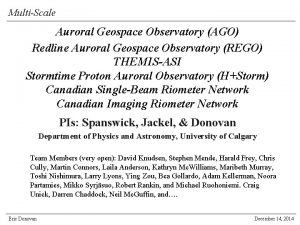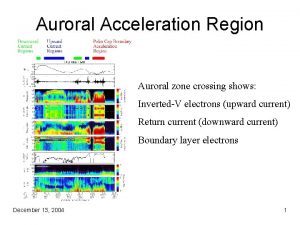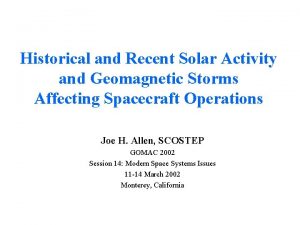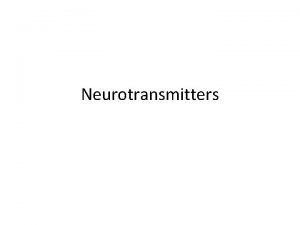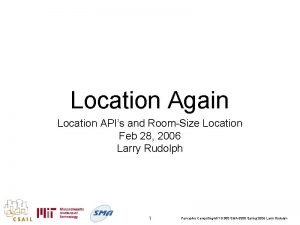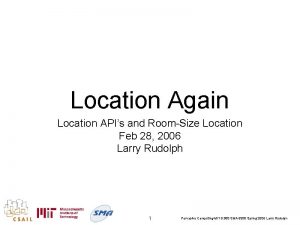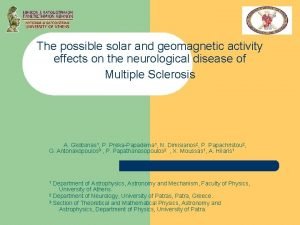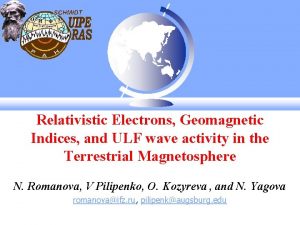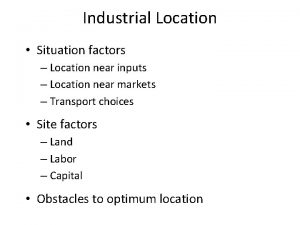Monitoring of auroral oval location and geomagnetic activity




















- Slides: 20

Monitoring of auroral oval location and geomagnetic activity based on magnetic measurements from satellites in low Earth orbit. S. Vennerstrom Technical University of Denmark, Denmark (DTU) SOTERIA collaboration

Auroral oval location – why bother? • • Ground Induced Currents (auroral electrojets) Communication problems Increased radiation dose in LEO (energetic electrons) Correlated with cut-off latitude of SEPs NOAA - POES Particle precipitation SSA Magnetic field?

Current low altitude, polar orbiting, high precision magnetic field missions CHAMP 2000 -2010 Ørsted 1999 - ? Ørsted 2/SAC C 2000 -2004 These data can be used to derive electrojet location during passage 2004

Method – CHAMP passing the polar region Babs (residual) (blue), Babs/Δx (red) 2004

Eastward and westward auroral electrojets Northern and Southern hemisphere

Electrojet position and intensity statistical Kp dependance

Comparison to ABI and AL Dst latitude CHAMP AL 2004

CHAMP Comparison to AU and AL 2004

April 2002 Boundary: b 2 e 2004 Boundary b 2 e: Maximum average energy of precipitating electrons

Comparison to acceleration boundaries (discrete aurora) Boundaries: b 3 a and b 3 b Boundary b 3 a and b 3 b: Poleward and equatorward boundary of acceleration events

Close association even in details! Small changes from one orbit to the next are not noise! 2004

Dst - observed from satellite 2004

Summary • Satellite magnetic field intensity measurements in polar low Earth orbit can be very useful for space weather monitoring • The latitude of the auroral electrojets is well determined by the satellite B-field intensity data. It coincides with the b 2 e electron precipitation boundary (max electron energy), and the equatorward boundary of the discrete auroral precipitation. • The magnetic data can provide a measure of electrojet intensity well correlated with AL and AU and a measure of the ring current intensity well correlated with Dst

Extras

The Swarm mission Constellation • 3 satellites: A+B: 2 side-by-side in low orbit, =1. 5° C: 1 in higher orbit • A+B staying together • A+B and C Slowly drifting apart in LT Based on Swarm we can create a European counterpart to the US auroral oval monitoring

Measurement requirements Auroral electrojet location: Accuracy: 1 n. T? Blå kurve: Forstyrrelse af Babs Grøn: d. Babs/dlat Rød: d. Babs/dlat filtreret=max viser positionen af electrojet’en

Satellite: low lat. ΔB

Automatic b 2 e detection fail

IMF By dependence

Magnetic disturbances - Two approaches • Using B-field vector-data: – Inversion of high latitude electrodynamic parameters: FAC strength and location, polar cap potential, Joule heating – Requires continous data (CHAMP, some Ørsted events)+ E-field or conductance (Swarm) • Using only data on B-field intensity – Estimate location and intensity of ionospheric electrojets – Continous data from at least 3 satellites available (less challenging for future missions) This presentation
 Geomagnetic
Geomagnetic Geomagnetic
Geomagnetic Geomagnetic
Geomagnetic Sale 234m gic emtekdagareuters
Sale 234m gic emtekdagareuters Federal location monitoring program
Federal location monitoring program A cross country skier moves from location a
A cross country skier moves from location a Regional factors for location planning
Regional factors for location planning Bpm bam
Bpm bam Federal reserve
Federal reserve User activity monitoring
User activity monitoring Impedance matching ear
Impedance matching ear Debye huckel limiting law
Debye huckel limiting law Location activity 6b
Location activity 6b Osseous labyrinth
Osseous labyrinth Cíngulo
Cíngulo Oval fat body
Oval fat body Flowchart oval
Flowchart oval Normal moles
Normal moles Oval.com.uy
Oval.com.uy Cilindros uratos amorfos
Cilindros uratos amorfos The oval shaped symbols placed on staff
The oval shaped symbols placed on staff
